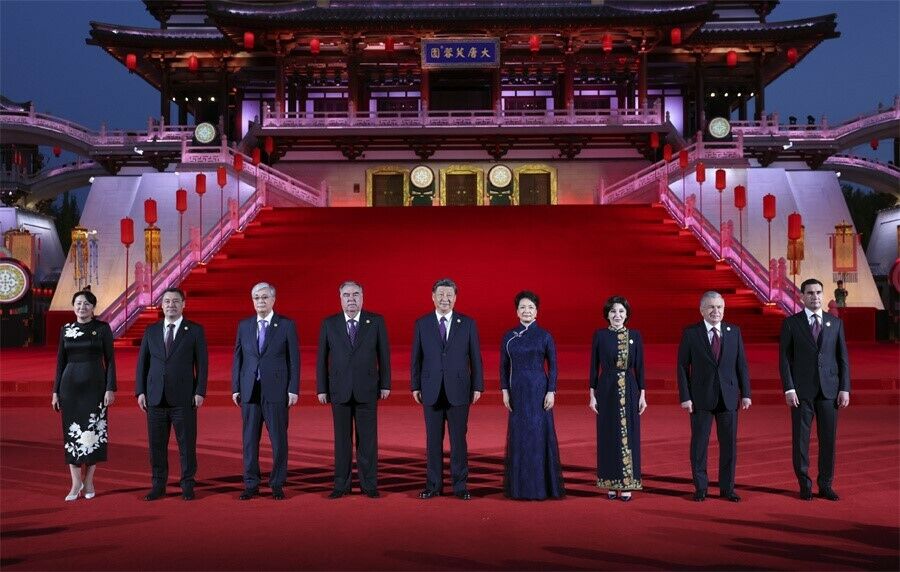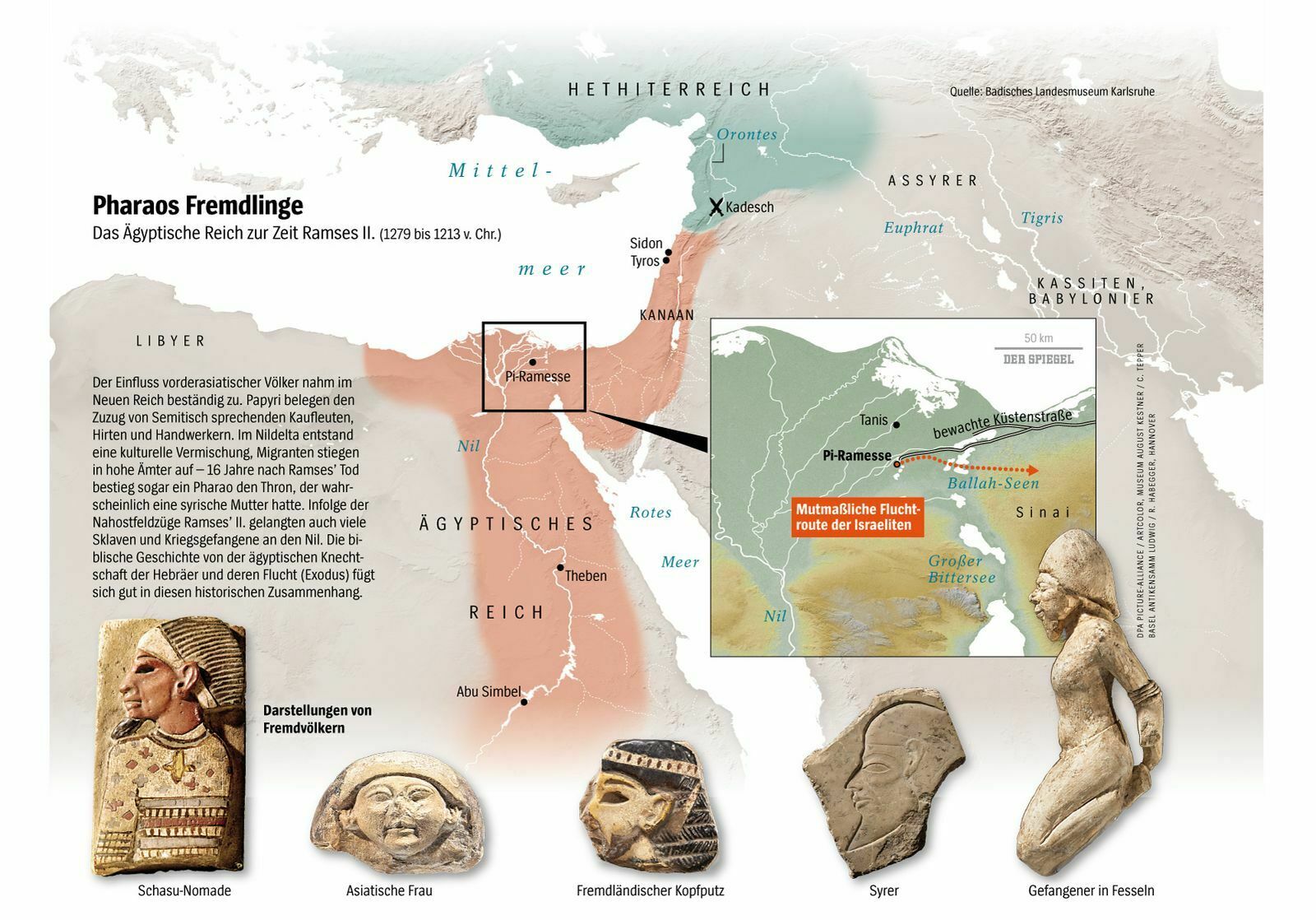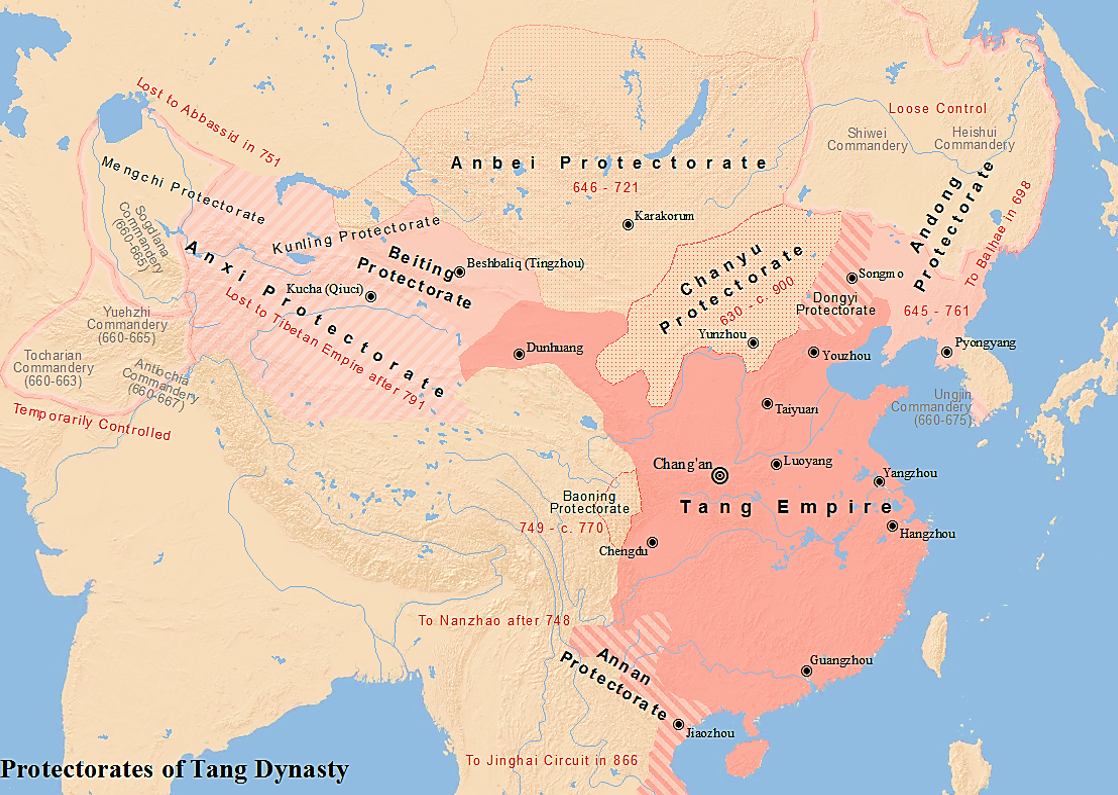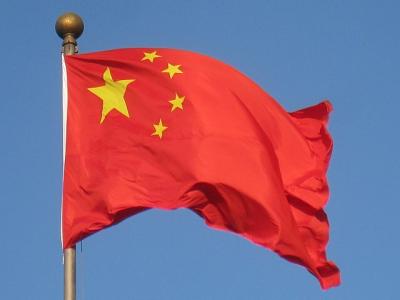China between the next superpower and another Ptolemaic Egypt. The rise of China from the perspective of historical comparison
Is China the next superpower? A short historical comparison, which could show us more or less an Alpha version of “The rise of China” - may provide us with another answer – possibly negative.

Xi Jinping and leaders of five central Asian countries at the Tang Paradise theme park in Xi’an (Source: http://en.cppcc.gov.cn/2023-05/19/c_887893.htm)
Just about a week ago, Chinese President Xi Jinping decided to hold a welcoming ceremony at the Tang Paradise theme park for the leaders of Central Asian countries who had come to Xi’an for the China-Central Asia Summit, taking place about the same time as the G7 summit in Hiroshima. This choice could not have been made arbitrarily: for the Chinese, the Tang dynasty (618 - 907) does not represent just one dynasty among the total of twenty-four of them, but a peak era of China’s both inner economic and cultural prosperity and international influence. Is China regaining its position now as it did in the Tang dynasty time? In spite of the many crises, such as the accelerating population aging (China’s true fertility rate is already much lower than in most Western countries) and the debt of local governments, there is no doubt that China has already undergone an explosive economic growth and an unprecedented political rise on the world stage in the last four decades: Not only has China become the world’s second-largest economy, the world’s top exporter and second-largest importer of commodities, constructor of impressively massive infrastructure, but its military presence and political influence have also experienced a significant increase, so that even the Covid-19 epidemic has been seen by some commentators as an opportunity[i] for China to accelerate its rise. Oswald Spengler (1880 - 1936), a significant 20th century philosopher of history and comparative historian, whose assertion that “China is dead and would remain dead” in I am not a prophet (German: Ich bin kein Prophet) seems to have already been completely falsified in view of the current development.
However, if we take into account the fact that the rise of almost every world hegemon is rooted in a long historical evolution measured in centuries, it can be quite risky to make any judgment based on short-term trends over a few decades. And it is precisely here that historiography, which since Thucydides and Cicero has been understood not only as the faithful recording of facts (“how it really was/ wie es eigentlich gewesen ist”), but also as a learning and reference database capable of continuously serving the future, can play its possible predictive role. As a Chinese proverb says, “Don’t forget the things that came before, since they are the teachers of the things that will come after”. Thus, we might assume that if a short analysis of historical analogies can show that there is an Alpha version of the “rise of China” in the world history, then it will undoubtedly deepen our understanding of the real situation and position of China today. Fortunately, like it is mostly the case, there is basically nothing new under the sun: in the world history, there is a highly precise equivalent of today’s China: not only statically, but also dynamically similar (which means that they both underwent a structurally highly similar process to arrive at their then contemporary form)- that is, the Ptolemaic Egypt.
Dynamic Similarities: The Morphology of Civilization[ii] from an Expanding World Empire to an Amusement Park for Foreign Conquerors
Comparative historiography (David Engels[iii]) has already shown us that the phenomenon of great spatial expansion is not specific to recent European colonialism only, but is a universal process observed in many cultures, although it often exists in a specific historical period only and is limited by the corresponding technology level. In the first thousand years before the establishment of both the present-day People's Republic of China and Ptolemaic Egypt, we can observe a structurally similar transition of two civilizations from the expansionary phase to the defensive phase, and finally to a continued submission to foreign conquerors. Firstly, there was a phrase of expansion: Under the world-famous Pharaoh Ramses II (1303-1213) of the 19th Dynasty (1292-1189), Egypt not only achieved a high degree of centralization internally, but also expanded its external boundaries to almost all of Canaan and Libya, becoming a giant world empire (according to the standards of that time) spanning Western Asia and North Africa. Under the reigns of the Tang emperors Taizong(Li Shimin, 598 - 649) and Xuanzong (Li Longji, 685 - 762) China also, on the one hand, briefly extended its borders westward to present-day Kyrgyzstan, eastward to present-day Korea, and southward to present-day Vietnam, and began to exert a decisive cultural influence on Japan (just like Egypt on Cyprus), becoming a giant world empire spanning Central Asia and East Asia. On the other hand, it was internally significantly more centralized than under the previous semi-feudal military aristocracy of the Nord Dynasties (439 - 581), which prefigured the total renaissance of bureaucratism in the Song Dynasty (960 - 1279).

Egypt under Ramses II (Source: https://www.spiegel.de/spiegel/pharao-ramses-ii-der-tausendtonnenmann-a-1126595.html#bild-5a1c6032-0001-0004-0000-000001086387)

The largest area of the Tang Dynasty, including direct dominion, sphere of influence and protectorates (Source: https://upload.wikimedia.org/wikipedia/commons/3/36/Tang_Protectorates.png)
Interestingly, after this short-lived expansionary spurt, both civilizations quickly shifted to a conservative defensive phase and finally sank into a paradise of foreign conquerors. After the end of 20th Dynasty (1189 – 1077), Egypt entered a period of alternating internal turmoil (e.g., slave revolts) and foreign invaders (e.g., sea peoples). The latter began to play an increasingly important role for the political organization of Egypt, resulting in the emergence of a large number of Libyan and Nubian pharaohs. Consequently, after the fall of the 26th Dynasty (664 - 525), Egypt no longer had an independent native ruler in a stable way, but gradually degenerated into an amusement park for various foreign conquerors, such as the Persians. And what is happening in China now is highly similar in pattern: Since the Northern Song Dynasty, which reunited the whole China after the political fragmentation under Five Dynasties (907 - 960), the country had been increasingly plagued by both external pressures from regimes in the northwest and north and by internal unrest from peasant revolts. It first lost its entire north (the Chinese equivalent of Upper Egypt, since it is the traditional heartland of China) to the Jin Dynasty (1125 - 1234). Then was completely conquered in its whole by the Mongols (the Yuan Dynasty, 1271-1368). After a period of independence during the Ming Dynasty (1368 - 1644), it was again conquered by the Manchurians – a half nomadic group originating from the northeast of modern China – and the whole Chinese territory was once again conquered by foreigners.
Static similarities: centralized and authoritarian political institutions - a monstrously prosperous export-oriented economy based on semi-slave labor.
Just as the history of Egypt entered the 27th Dynasty (525 – 404, founded by the Persians) and the history of China entered the Qing Dynasty (founded by the Manchus) - that is, when Egypt and China became part of the Persian and Manchu empires respectively, the independence-degree of these two civilizations seems to have reached its lowest point in history, seeming to mark their imminent withdrawal from the arena of history as ruins of civilizations. However, as they each met with emerging civilizations that were expanding at an accelerated rate - in the case of Egypt it was the Greco-Roman civilization, and in the case of China it was the Western civilization - they both seem to have undergone a certain economic “reactivation”. Because that activation was deeply rooted in their respective social and political contexts, they both exhibit a certain “indigenous-foreign” duality.
In their respective “indigenous” nature, they both embody the sharp contrast between a highly developed and authoritarian bureaucratic apparatus and monarchical dictatorship (“strong leadership”) and a weak society that is almost incapable of self-organizing and self-governing: Politically, the Ptolemaic dynasty of the Greeks inherited an ancient Egyptian tradition of highly bureaucratic and centralized state from Ramses. In turn, the People’s Republic of China, which began with a highly Soviet background and was profoundly shaped by globalization after the Reform and Opening-up (since 1979), inherited an extremely deep-rooted Chinese tradition of bureaucracy and authoritarianism from the Song dynasty. Both the civilizations had a similar social basis in a politically passively, socially highly atomized population, and experienced some expansion of their spheres of influence (Ptolemaic Egypt to Libya and Syria, China to Central Asia and Africa). Those political expansion were driven by the highly authoritarian Ptolemaic state and the CCP, respectively, rather than by the spontaneous organization of their respective societies. The above was reflected in the fact that those expansions were either highly demilitarized or not militarily supported by native populations. Due to the long tradition of demilitarization of the corresponding native societies, Ptolemaic Egypt relied heavily on the Hellenistic world’s mercenaries in military affairs, while modern China has inherited the highly demilitarized tradition of “good men do not become soldiers, just like good iron would not be made into nails” since the Song Dynasty.
On the other hand, that social and political foundation also provides a profound source of impetus for the “economic reactivation” through external influences, giving these two late civilizations a comparative advantage in the respective “globalization” (hellenization and contemporary globalization). In the case of Egypt, the Ptolemaic dynasty introduced the highly developed commodity and monetary economy of the late Hellenistic world into through the world city of Alexandria, allowing the civilization of Egypt to explode with astounding economic power. This is why many contemporary scholars from Max Weber to Sitta von Reden have found in Ptolemaic Egypt an astoundingly developed and highly monetized commodity economy (much more monetized than the economy of medieval Europe, by the way) . In turn, China, after the so-called Reform and Opening up in 1979, met global capitalism and leapt to become the second largest economy in the world. However, on the one hand, due to the social context on which their respective economies depend, this economic prosperity is characterized by a high degree of export orientation (Egypt: wheat and papyrus; China: cheap light industrial goods) and dependence on imported technology, allowing Egypt and China to play a de facto role of a provider of cheap semi-slave labor in the Mediterranean world and in today’s globalized economic division of labor. Such semi-slave labor could, due to its political and social weakness and fragmentation, can be easily manipulated and exploited by the Ptolemaic authoritarian state and the contemporary CCP, which, at least not long ago, still acted coordinately with today’s “global players” and “big money”. On the other hand, both the Ptolemaic Egyptian and Chinese economies retained in general a fairly pronounced character of state control and state monopoly. In short, it is the high degree of fit and even internal coincidence between the logic of the Greek and contemporary versions of globalism and their respective social contexts that make this economic reactivation possible. However, economic reactivation need not automatically suggest a political reactivation, as shown by the case of Egypt, since much more than just economic power is needed to become a superpower.
Conclusion: Where is the future Rome?
Although the story of China is ongoing at this moment, history has already told us the end of the story of Egypt: to become a Roman province under the direct authority of the emperor, due to its highly important statue as the resource source of “panem et circenses”. Though this in the long run, just constituted a small episode in the status of Egypt as an object of history, but meant it no longer had and followed its own dynamic. Since in both our examples Ptolemaic Egypt and the present-day People’s Republic of China are understood as products of the interaction between a civilization in a period of expansion and the ruins of a civilization that has been reduced to an amusement park for conquerors, the attentive reader will surely also ask: where is the future Rome? Alea iacta non est…
[i] Hilpert, H. G., & Stanzel, A. (2021). China-winning the pandemic... for now: The People's Republic is exuding strength, but can they keep it up? (No. 1/2021). SWP Comment.
[ii] Considering that a centralized and despotic universal state is seen by many comparative historians, such as Spengler and Toynbee, as the inevitable final stage of a meaningful history of a culture or civilization, the attempt made here will begin precisely with that final stage. In this sense, depending on the somewhat old-fashioned distinction between “culture” and “civilization”, which means the fossilized all-round stagnation of the former cultural vitality, I refer to the present short attempt as a “morphology of civilization”.
[iii] Engels, D. (2021). Hellenisierung, Arabisierung und Sinisierung - Überlegungen zum Konzept des Kulturtransfers in den Kulturen der Vormoderne, in: J. Hoffmann-Salz (ed.), The Middle East as Middle Ground? Cultural Interaction in the Ancient Near East Revisited, Wien, 231-266.






Comments (0)